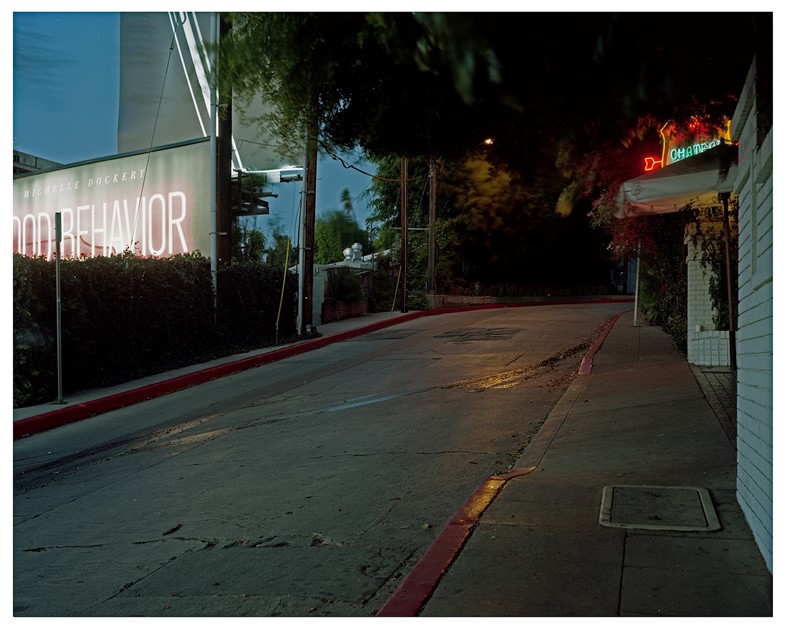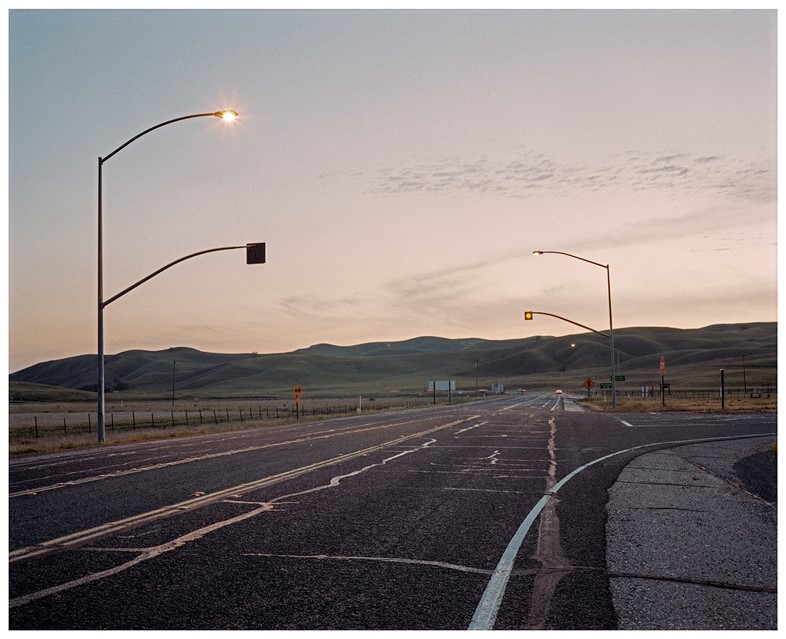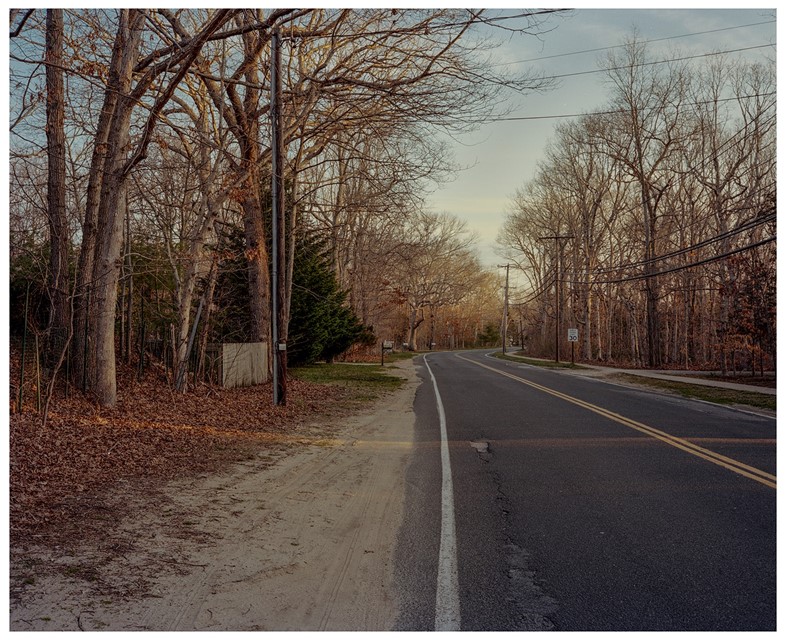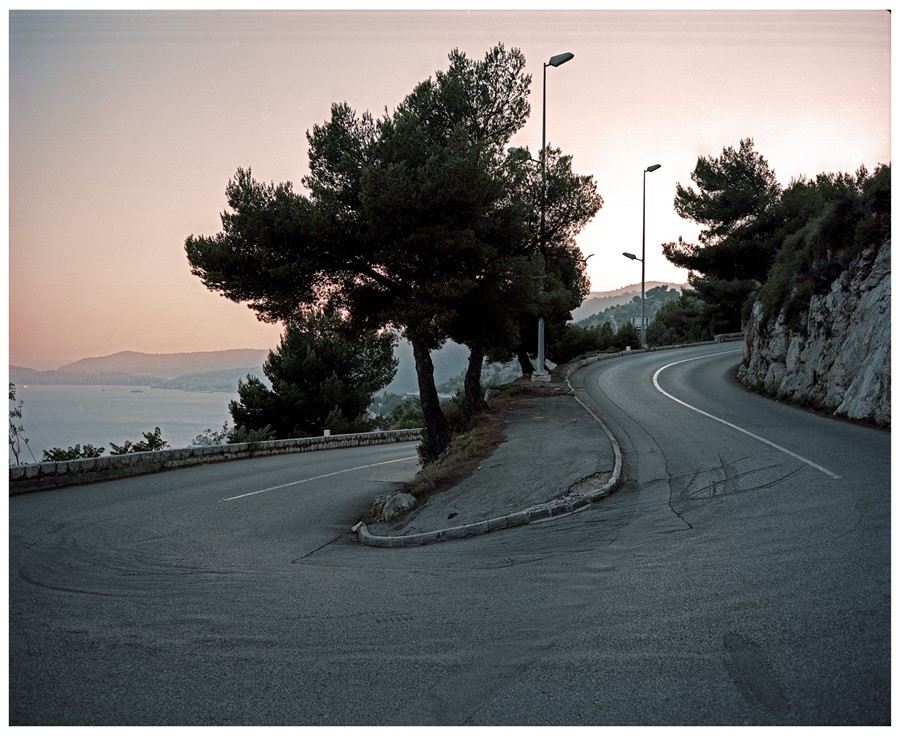Christophe Rihet documents the locations in which some of the golden era’s most iconic names, from Grace Kelly to James Dean, met their untimely end
Caption: No one would have thought Grace Kelly would die in a car accident along the same road she’d taken, almost 30 years earlier, in To Catch a Thief. Yet, on her way to Paris with her daughter, Stéphanie, her car drove off a curve in the road, crashing into the parking lot of a house 40 metres below. Stéphanie was barely injured; Grace died the next day.
The open road is so often associated with a sense of journey and unfurling possibility. But in the images shot by Christophe Rihet, the end of the road takes on a literal meaning. His series The Road to Death is on display at the Rencontres d’Arles photography festival in the south of France, having previously been previously published in M le Magazine du Monde in 2015. For the project, the photographer made pilgrimages to sites where some of the biggest 20th and 21st century pop culture icons have died, photographing them wholly emptied of activity at dawn or at dusk.
At first glance, the photographs might seem innocuous and quiet, like establishing shots from some art-house indie film, but once the context is clear they chillingly double as “invisible graves” and al fresco mausoleums. The skies are pallid and melancholy, the lights dim and eerie, the pavement pockmarked and scarred. What symbolism can still be extracted in places where death occurred? How can images speak through a sense of absence?

Caption: When Helmut Newton’s Cadillac left the famous Château Marmont in Los Angeles it was 11:40 on a Friday night. The car just missed running over a passing photographer from the Associated Press before crashing into a wall in front of the hotel on Sunset Boulevard. Helmut Newton died a few hours later at a nearby hospital. He was 83 years old, and could have been ill.
Rihet, who lives and works between New York and Paris, started his career assisting photographers like Satoshi Saikusa, Stéphane Sednaoui and Jean Baptiste Mondino, and he has gone on to work for various international fashion magazines. This series was partially inspired by English author James G. Ballard’s incendiary 1973 novel Crash, which focused on a perverse obsession with speed and violence.

Caption: James Dean died September 30, 1955. Production on the film Giant, during which all risky driving had been forbidden, had ended. He had just reclaimed his life, and his passion for cars. A race awaited him in Salinas the next day. Leaving Los Angeles early, he headed there in his Porsche 550 Spyder, his mechanic at his side. It was 5:40 in the afternoon. Coming down the opposite side, near Cholame on route 46, a Ford Sedan driven by Donald Turnupseed failed to signal as it turned to take the 41. Launched at 90 km/h by the collision, the Porsche spun in circles before completing its course against the barbed wire fence of a ranch that adjoined the road. Immobile within the metal wreck was the actor, dead at the age of 24.
Millions of people are killed in car crashes each year, and yet the notoriety of recognisable personalities dying behind the wheel seems to add an extra twinge, whether it’s Jackson Pollock in upstate New York, Diana Spencer and Dodi Al-Fayed at Pont de l’Alma in Paris, or Notorious B.I.G. gunned down in his car on Wilshire Boulevard in Los Angeles.

Jackson Pollock, a brilliant abstract painter, was 44 years old. An alcoholic by the age of 15, he had courted death for some time. He met it on an August night in 1956, not far from his home in the city of Springs. Drunk with speed as well as booze, he let his Oldsmobile drift just like he’d let his life drift. There were three people in the car. Ruth Kligman, his mistress, was the sole survivor.
Grace Kelly’s car went off a curved road right near where she’d filmed the infamous Hitchockian classic To Catch a Thief (her daughter, Stéphanie survived). Helmut Newton’s Cadillac just missed running over a passing photographer from the Associated Press before he crashed into a wall. James Dean, who had a raging passion for cars, was only 24 when his Porsche 550 Spyder got into a fatal collision. Safe to say, Rihet’s photographs reveal the tangible settings of these near-mythological pop culture chronicles and tap into our morbid fascination with both the cult of celebrity and mortality.
Road to Death is on view at the Maison des Peintres, Arles, July 3 until September 24, 2017.
